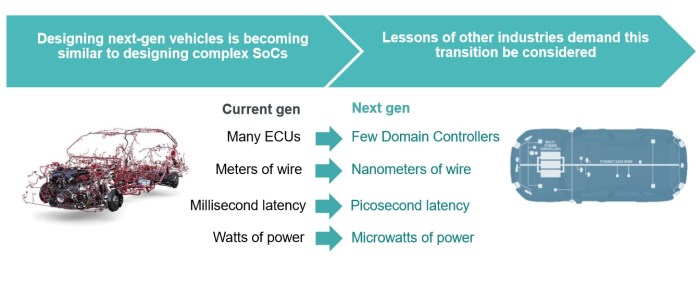The automotive landscape is undergoing a dramatic transformation, driven by the rapid advancements in software technology. No longer are cars simply mechanical marvels; they are increasingly sophisticated computing platforms on wheels. This shift has profound implications for how vehicles are designed, manufactured, and, most importantly, updated. By 2025, the future of car automotive software updates will be characterized by several key trends, shaping the driving experience and the overall automotive ecosystem.
Over-the-Air (OTA) Updates: The New Normal
Over-the-air (OTA) updates are rapidly becoming the standard for delivering software improvements to vehicles. This technology allows manufacturers to remotely push updates to vehicles, eliminating the need for costly and time-consuming trips to dealerships. OTA updates enable the deployment of bug fixes, performance enhancements, new features, and even entirely new functionalities post-purchase. This continuous improvement cycle significantly enhances the vehicle’s lifespan and value proposition.
Benefits of OTA Updates:
- Cost Savings: Eliminates the need for physical visits to service centers.
- Convenience: Updates can be performed at the owner’s convenience, often overnight.
- Improved Security: Security patches can be quickly deployed to address vulnerabilities.
- Enhanced Functionality: New features and capabilities can be added over time.
- Increased Vehicle Lifespan: Regular updates extend the vehicle’s useful life.
Challenges of OTA Updates:
- Cybersecurity Risks: OTA updates introduce potential vulnerabilities if not properly secured.
- Network Reliability: Reliable internet connectivity is crucial for successful updates.
- Data Management: Managing vast amounts of data associated with updates is complex.
- Consumer Adoption: Educating consumers about the benefits and process of OTA updates is essential.
- Software Compatibility: Ensuring backward compatibility across different vehicle models and software versions is critical.
The Rise of AI and Machine Learning in Automotive Software
Artificial intelligence (AI) and machine learning (ML) are poised to revolutionize automotive software updates. These technologies enable vehicles to learn from their driving patterns and adapt their performance accordingly. This includes features like predictive maintenance, personalized driver assistance, and adaptive cruise control systems that continuously improve their accuracy and efficiency through data analysis and algorithm refinement delivered via OTA updates.
AI-Powered Features:
- Predictive Maintenance: AI algorithms analyze vehicle data to predict potential issues before they occur.
- Personalized Driver Assistance: AI adapts driver assistance systems to individual driving styles.
- Advanced Driver-Assistance Systems (ADAS): Continuous improvement of ADAS features like lane keeping assist and automatic emergency braking.
- Autonomous Driving Capabilities: OTA updates play a crucial role in refining autonomous driving algorithms.
- In-Car Entertainment and Infotainment: AI-powered voice assistants and personalized content recommendations.
The Importance of Cybersecurity in Automotive Software Updates
With the increasing reliance on connected vehicles and OTA updates, cybersecurity becomes paramount. Protecting vehicle systems from malicious attacks is crucial to ensure the safety and security of drivers and passengers. This requires robust security measures throughout the entire software update lifecycle, from development and testing to deployment and monitoring. Regular security audits and penetration testing are essential to identify and address vulnerabilities.
Cybersecurity Measures:
- Secure Coding Practices: Developing software with security in mind from the outset.
- Regular Security Audits: Identifying and addressing vulnerabilities in the software.
- Encryption: Protecting data transmitted during OTA updates.
- Authentication and Authorization: Verifying the authenticity of updates and controlling access to vehicle systems.
- Intrusion Detection and Prevention: Monitoring for and responding to malicious activity.
The Role of Cloud Computing in Automotive Software Updates
Cloud computing plays a significant role in managing and delivering automotive software updates. The cloud provides the scalability and flexibility needed to handle the massive amount of data involved in updating millions of vehicles worldwide. Cloud-based platforms enable efficient update distribution, remote diagnostics, and data analysis to improve future updates.
Cloud-Based Advantages:
- Scalability: Easily handle the increasing number of connected vehicles.
- Flexibility: Adapt to changing requirements and update strategies.
- Cost-Effectiveness: Reduce infrastructure costs by leveraging cloud resources.
- Data Analytics: Analyze vehicle data to improve software and services.
- Remote Diagnostics: Diagnose and troubleshoot vehicle issues remotely.
The Future of Automotive Software Update Management
By 2025 and beyond, we can expect even more sophisticated and seamless automotive software update management systems. This includes improved update scheduling, more intelligent update prioritization, and enhanced user interfaces for managing updates. Artificial intelligence will play a more significant role in optimizing the update process, predicting potential issues, and personalizing the update experience for individual drivers. The integration of blockchain technology may also enhance security and transparency in the update process.
Frequently Asked Questions (FAQ)
- Q: Are OTA updates safe? A: Yes, when implemented correctly, OTA updates are safe. Manufacturers employ robust security measures to protect against malicious attacks.
- Q: How long do OTA updates take? A: The duration of an OTA update varies depending on the size of the update and the vehicle’s internet connection. It can range from a few minutes to several hours.
- Q: What happens if my internet connection is interrupted during an update? A: Most systems are designed to resume updates after an interruption. However, it’s best to ensure a stable internet connection during the update process.
- Q: Will OTA updates affect my vehicle’s warranty? A: Generally, OTA updates do not affect your vehicle’s warranty, but it’s always advisable to check with your manufacturer.
- Q: What if I don’t want to receive OTA updates? A: While most manufacturers encourage OTA updates for optimal performance and security, options to defer or manage updates may be available, though this may limit the vehicle’s functionality.
Conclusion
The future of car automotive software updates is bright, promising a more connected, safer, and personalized driving experience. OTA updates, powered by AI and cloud computing, will continue to transform the automotive industry, enhancing vehicle functionality, improving safety, and extending vehicle lifespan. However, addressing cybersecurity concerns and ensuring seamless user experiences remain crucial for the widespread adoption and success of this transformative technology.
Call to Action
Stay informed about the latest advancements in automotive software updates. Follow industry news, engage in online forums, and connect with automotive experts to stay ahead of the curve. Embrace the future of driving – a future powered by software.
Question Bank
Will these updates be mandatory?
While some updates might be mandatory for safety reasons, many will likely be optional, allowing owners to choose which features they want to install.
How will data privacy be protected?

Source: eetimes.com
Robust cybersecurity measures and transparent data handling policies will be crucial to ensuring user privacy. Regulations and industry standards are being developed to address these concerns.
What happens if an update fails?
Manufacturers will need to implement robust rollback mechanisms to revert to previous software versions if an update causes problems. Customer support will play a vital role in managing such situations.
Will older cars receive updates?

Source: cybellum.com
The availability of updates for older vehicles will depend on the manufacturer’s policies and the vehicle’s hardware capabilities. Some manufacturers may offer extended support, while others may prioritize newer models.
